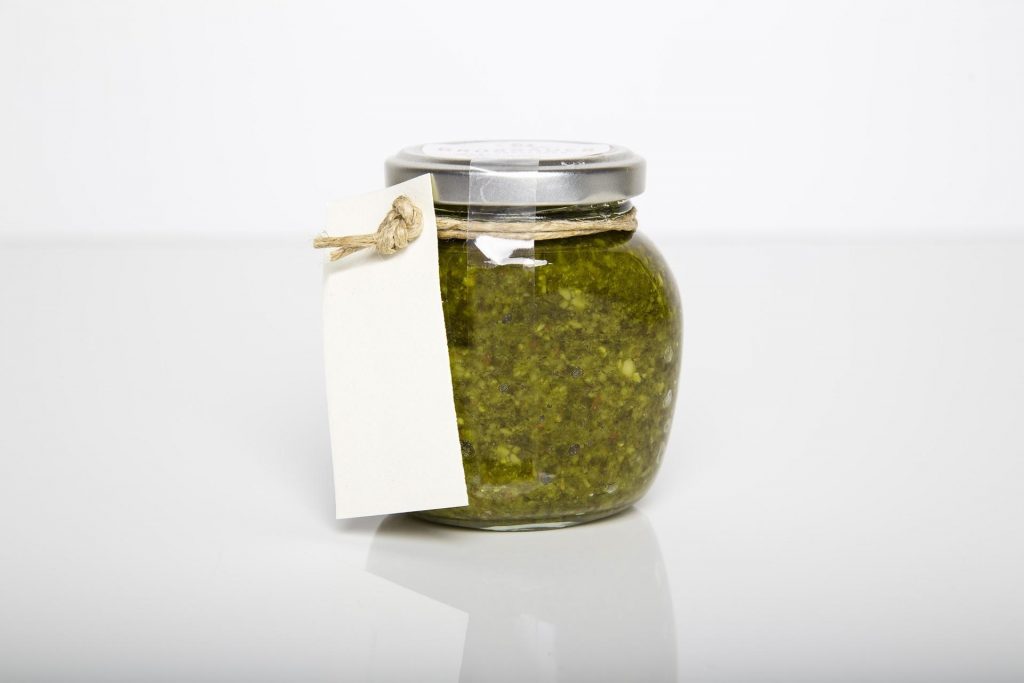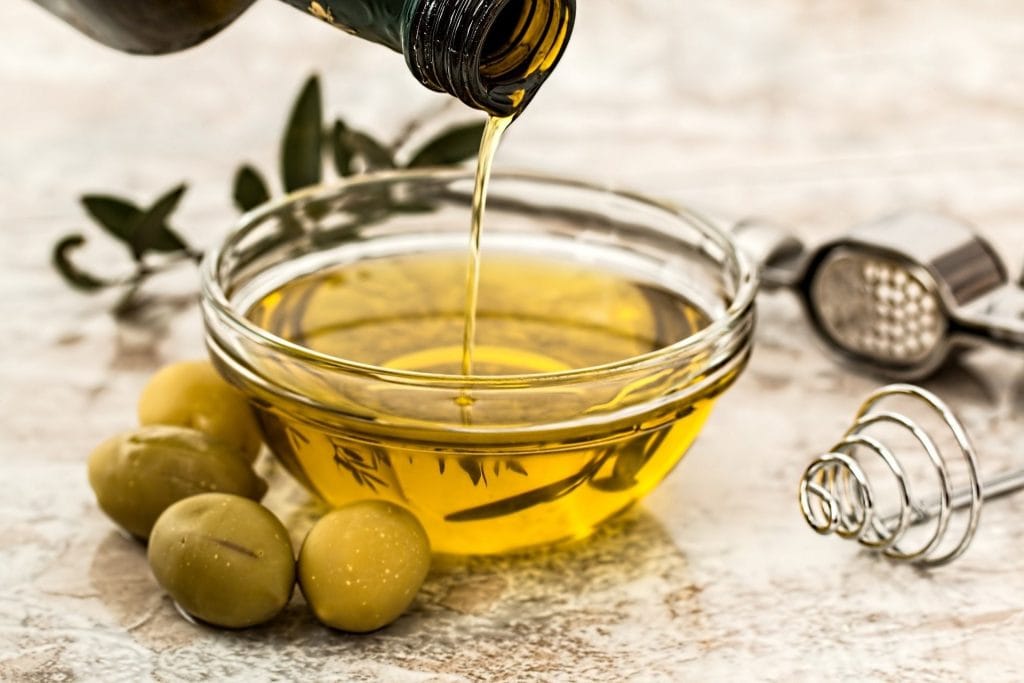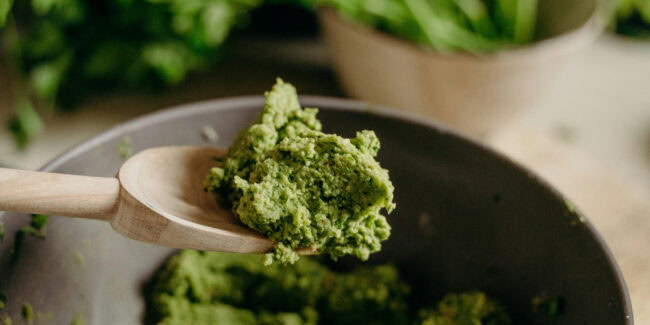Why The Best Fresh Pesto Deserves The Best Extra Virgin Olive Oil
Updated July 22nd 2025

Summary
- All you need to make fresh pesto is a food processor, fresh herbs, garlic, pine nuts, Parmesan cheese, and quality extra virgin olive oil.
- Choosing a high-quality extra virgin olive oil with a robust flavour makes for the best fresh pesto. Morocco Gold’s distinctive green fruitiness, hints of sweet almonds, fresh turf and a hint of herbs is the perfect olive oil partner for making fresh pesto.
Contents
- What Makes the Best Olive Oil for Pesto?
- Choosing The Best Extra Virgin Olive Oil For Your Pesto
- Why All The Fuss About Homemade Pesto With Olive Oil?
- Which Is The Best Extra Virgin Olive Oil For Taste?
- Why Is Evoo The Best For Making Pesto?
- What Makes The Pesto Turn Out Bitter?
- What Are Some Of The Best Flavours To Enhance The Flavour Of Pesto?
- How to Make Fresh Basil Pesto at Home
- Why Morocco Gold is the Best Olive Oil for Pesto
Pesto is one of those magical condiments that can elevate any meal. Whether it’s topping a bowl of al dente pasta, slathered over crusty bread, or drizzled over grilled meats, a good pesto can transform the simplest ingredients into something extraordinary. While the classic pesto recipe is simple, with basil, garlic, pine nuts, Parmesan, and olive oil, the quality of the olive oil you choose can make or break your pesto. Here’s why extra virgin olive oil (EVOO) is the ultimate choice for crafting the perfect pesto.
What Makes the Best Olive Oil for Pesto?
If you want to make good pesto, the type of olive oil you use makes a huge difference. The best olive oil for pesto adds a smooth, slightly peppery finish without overpowering the delicate flavour of fresh basil leaves. That’s where a high-quality, cold-pressed extra virgin olive oil like Morocco Gold comes in.
Using extra virgin olive oil means your pesto sauce will benefit from rich health benefits, a naturally vibrant flavour, and the creamy texture you need for an excellent recipe. Avoid refined oils or cheaper blends, as they can leave the pesto oily or dull in taste.
Choosing The Best Extra Virgin Olive Oil For Your Pesto
With so many varieties of olive oil on the market, choosing the right one can feel overwhelming. When it comes to pesto, though, experts agree that extra virgin olive oil is the gold standard. Its rich, fruity, and slightly peppery flavour can elevate your pesto’s taste to the next level. Unlike refined olive oils, EVOO is produced without heat or chemicals, which preserves its natural flavours and antioxidants, key components for a vibrant pesto.
Olive oil is a key ingredient in pesto, and there are many different types of olive oil to choose from. So, which one is the best for making pesto? The key to making the best pesto is using high-quality ingredients, particularly the extra virgin olive oil. This simple sauce can be used as a pasta topping, sandwich spread, or dip for vegetables. Indulge in the fresh flavours of summer with a homemade batch of pesto.
In this blog post, we’ll provide tips on how to select the right EVOO for your pesto. We’ll also share our favourite recipe for pesto made with Morocco Gold extra virgin olive oil.

Why All The Fuss About Homemade Pesto With Olive Oil?
Whether you’re a fan of pesto or not, there’s no denying that it’s a favourite food choice for many. There are plenty of pre-made options available in your local supermarket, but some foodies out there are quite particular about making their own! While the classic recipe calls for Parmesan cheese, pine nuts, and olive oil, the type of olive oil you use can make all the difference in terms of taste. Premium quality extra virgin olive oil is undoubtedly the best choice for making fresh pesto. Not only does it impart a rich and fruity flavour, but it also contains high levels of antioxidants and healthy fats. These properties not only enhance the flavour profile of your pesto but also make it a healthier option.
Which Is The Best Extra Virgin Olive Oil For Taste?
The best EVOO for your pesto depends on your flavour preferences. Do you enjoy an olive oil with a bold and peppery kick? Or do you prefer a subtler, fruitier profile? Generally, medium to robust EVOOs work well, as they complement pesto’s bold flavours without overpowering the other ingredients.
According to a fantastic summary from The Whole Portion, Evoo is the best for pesto. And it comes as no surprise that the good people at Morocco Gold wholeheartedly agree! Just remember, there is no cooking involved in making pesto, so the flavour of your chosen olive oil will stand out.
Why is Extra Virgin Olive Oil the Best for Making Pesto?
Extra virgin olive oil brings so much more to the table than just flavour. It’s packed with healthy fats and antioxidants, which can elevate your pesto into something nutritious as well as delicious. The unprocessed nature of EVOO ensures the oil retains its depth and complexity, which pairs perfectly with the vibrant freshness of basil. EVOO also has an emulsifying quality that helps create that silky, smooth pesto texture you’re aiming for.
Refined oils or lower-quality olive oils, on the other hand, lack the depth and can leave your pesto tasting flat and greasy. EVOO highlights the natural flavours of your pesto rather than masking them, ensuring every blend is a celebration of freshness and quality.
The Whole Portion explains:
Because pesto is such a strong sauce, anything you do to reduce its pungency just a little and steer it toward a sweeter, rounder-flavored sauce will help. That includes selecting a good, extra virgin olive oil; using Pecorino Sardo cheese instead of Romano; and not toasting the pine nuts.
The Whole Portion
That said, if you want other flavours to stand out more, you can use regular olive oil, not extra-virgin, because the latter can mask subtle flavours and tends to become bitter in the food processor.
What makes the pesto turn out bitter?
Extra-virgin olive oil contains bitter-tasting polyphenols coated by fatty acids, which prevent them from dispersing. If the oil is emulsified in a food processor, these polyphenols get squeezed out, and the liquid mix turns bitter. Strong flavours can help overcome slight bitterness in pesto. Add more cheese, garlic or extra nuts to help counteract the bitterness. If the basil is to blame, try mixing it with an equal part of non-bitter greens, including more basil or some spinach.

What Are Some Of The Best Flavours To Enhance The Flavour Of Pesto?
While classic pesto is unbeatable, sometimes it’s fun to add a twist. Here are some flavours that pair remarkably well with pesto, complementing its herbaceous and garlicky profile:
- A quality extra virgin olive oil
- basil leaves
- cheese
- garlic (roasted or raw)
- pine nuts
- bacon
- roasted peppers
- roasted tomatoes
It comes as no surprise that there are thousands of recipes out there to make best use of your Morocco Gold evoo but we had to pick a favourite, so we did, and here it is! But you can also find a basic recipe below to help you get started.
How to Make Fresh Basil Pesto at Home
To create fresh basil pesto, start with the traditional ingredients:
- 2 cups loosely packed basil leaves (preferably Genovese basil or own basil plant)
- 2 tablespoons toasted pine nuts (or substitute walnuts if preferred)
- 2–3 tablespoons grated cheese (Parmesan or Pecorino Romano)
- 1–2 cloves raw garlic, chopped
- ½ teaspoon kosher salt and a pinch of black pepper
- Juice of half a lemon (lemon juice helps keep colour and adds freshness)
- ½ cup extra virgin olive oil
Blend everything in a food processor until smooth. Add more olive oil if needed for a silky texture. For a traditional feel, try using a mortar and pestle instead; it takes a little more effort but can release even more flavour from the fresh herbs.
Why Morocco Gold is the Best Olive Oil for Pesto
If you’re looking for the best olive oil for pesto, you need an oil that enhances rather than overwhelms. Morocco Gold extra virgin olive oil is cold pressed, rich in polyphenols, and made to pair beautifully with fresh basil, garlic, and grated cheese.
Whether you’re making a half batch or enough for the whole week, using Morocco Gold ensures the best flavour, nutritional benefits, and a naturally vibrant pesto every time. Order Morocco Gold today and take your pesto making to the next level.
